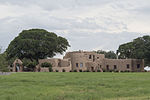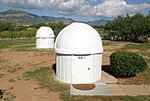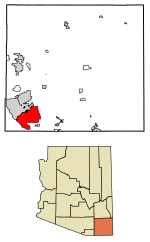Miller Peak (Arizona)

Miller Peak, at 9,470 feet (2,886 m), is the second-highest mountain in Cochise County, Arizona (after Chiricahua Peak). Located approximately 10 miles south of Sierra Vista, Arizona, it is the highest mountain in the Huachuca mountain range and a popular local hiking destination. The Miller Peak Wilderness encompasses 20,190 acres and is managed by the Coronado National Forest. This is also the most southerly peak and land area to rise above 9,000 feet in the continental United States. The area was affected by the 2011 Monument fire and most of the pine trees seen in older photographs were burned and destroyed. Scrub oak are beginning to replace the areas that were previously covered by pine. Google “Satellite” images from 2018 would seem to show that many of the pre-fire pine and fir trees are still there and very much alive. Furthermore, the satellite images also tend to suggest that in the few locations where 100% tree kill took place, the forest is already beginning to regenerate.
Excerpt from the Wikipedia article Miller Peak (Arizona) (License: CC BY-SA 3.0, Authors, Images).Miller Peak (Arizona)
Miller Peak Trail #105, Sierra Vista
Geographical coordinates (GPS) Address Nearby Places Show on map
Geographical coordinates (GPS)
| Latitude | Longitude |
|---|---|
| N 31.3928781 ° | E -110.2928573 ° |
Address
Miller Peak Trail #105
Miller Peak Trail #105
Sierra Vista
Arizona, United States
Open on Google Maps






